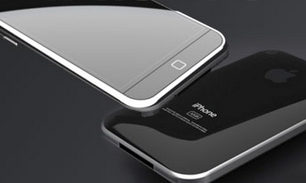
NEW YORK (CNN) – The iPhone 5 hasn’t even hit stores yet and it’s already blowing the doors off the competition. Apple pre-sold 2 million iPhone 5s in one day, setting a new smartphone record.
Industry analysts widely expect the iPhone 5 to be the bestselling mobile device of all time. Given the way Apple continues winning over consumers around the world, the iPhone 5’s global record will probably last exactly one sales cycle, until the iPhone 6 is released.
In the United States, however, there’s a reasonable chance that the iPhone 5 will hold the nation’s smartphone sales record for much longer — maybe forever. As the smartphone boom comes to an end and carriers make upgrades more expensive and onerous for their customers, the iPhone’s popularity in the U.S. is likely to plateau.
The number of American smartphone subscribers is expected to reach nearly 140 million by the end of 2012, equal to 57 percent of wireless customers, according to Kevin Smithen, an analyst at Macquarie Securities. The percentage of wireless subscribers with a smartphone is on pace to eclipse the magic 70 percent threshold next year — the level at which most telecommunications services, like cable and broadband, have historically begun to slow their rapid rise.
“The smartphone market, and particularly the iPhone market, will slow next year after very strong shipments of the next iPhone through year-end,” Smithen predicts.
The U.S. smartphone upgrade rate has already begun to fall, thanks to a combination of factors. Innovation has slowed over the past couple years (the iPhone 5 has another row of apps!) and carriers have begun to make upgrades more expensive and less desirable (hello, “shared data” plans). After the iPhone 4S launch absolutely decimated carriers’ profit margins, the networks made their upgrade policies more restrictive by raising activation fees, forcing customers to adopt tiered plans and lengthening the time customers need to stay under contract to become eligible for a new phone.
“These moves should result in fewer total upgrades … than seen in prior launches,” said Mike McCormack, analyst at Nomura Securities.
Yes, the iPhone 5 will sell like crazy. But by the time the iPhone 6 comes around, the U.S. smartphone market will look very different.
The number of iPhone upgrades – customers moving from one version of Apple’s gadget to another – nearly doubled in 2011 and is expected to double again in 2012 to roughly 20 million, according to Macquarie estimates. But the forecasts for iPhone upgrades after that show a flat line.
Most of Apple’s iPhones get sold to brand-new customers. Last year, Apple newbies bought two-thirds of the 30 million iPhones sold in the U.S., Macquarie estimates.
Those numbers will start dropping as the pool of untapped iPhone customers willing to splurge on a new iPhone dries up. The iPhone represented 45 percent of all smartphone sales last year at the “Big Three” national carriers – Verizon, AT&T and Sprint. Analysts at Macquarie, Nomura and other Wall Street firms expect that figure to rise significantly this year – then level off.
“We do not believe that Apple can grow its market share at the Big Three beyond 70 percent, as we expect several new low-end smartphones from Amazon, Huawei, LG, Nokia, Microsoft and Motorola in the new year as well as a Samsung Galaxy S4 at the high end,” said Smithen.
As a result, Macquarie predicts that iPhone sales will top out at 46.3 million next year before falling to 45.5 million in 2014.
Of course, this is Apple we’re talking about. The world’s biggest tech company has repeatedly proved naysayers wrong. Thanks to Apple’s reality distortion field and passionate groupies, the iPhone 6 and its successors could once again set new records in the United States.
“As long as there are Apple fanboys and fangirls, there will always be demand for the iPhone,” says Ramon Llamas, analyst at IDC. “There’s so much about the iPhone that people love and lust over, and Apple just kind of ropes you in. There’s a lot to keep Apple’s momentum going.”











